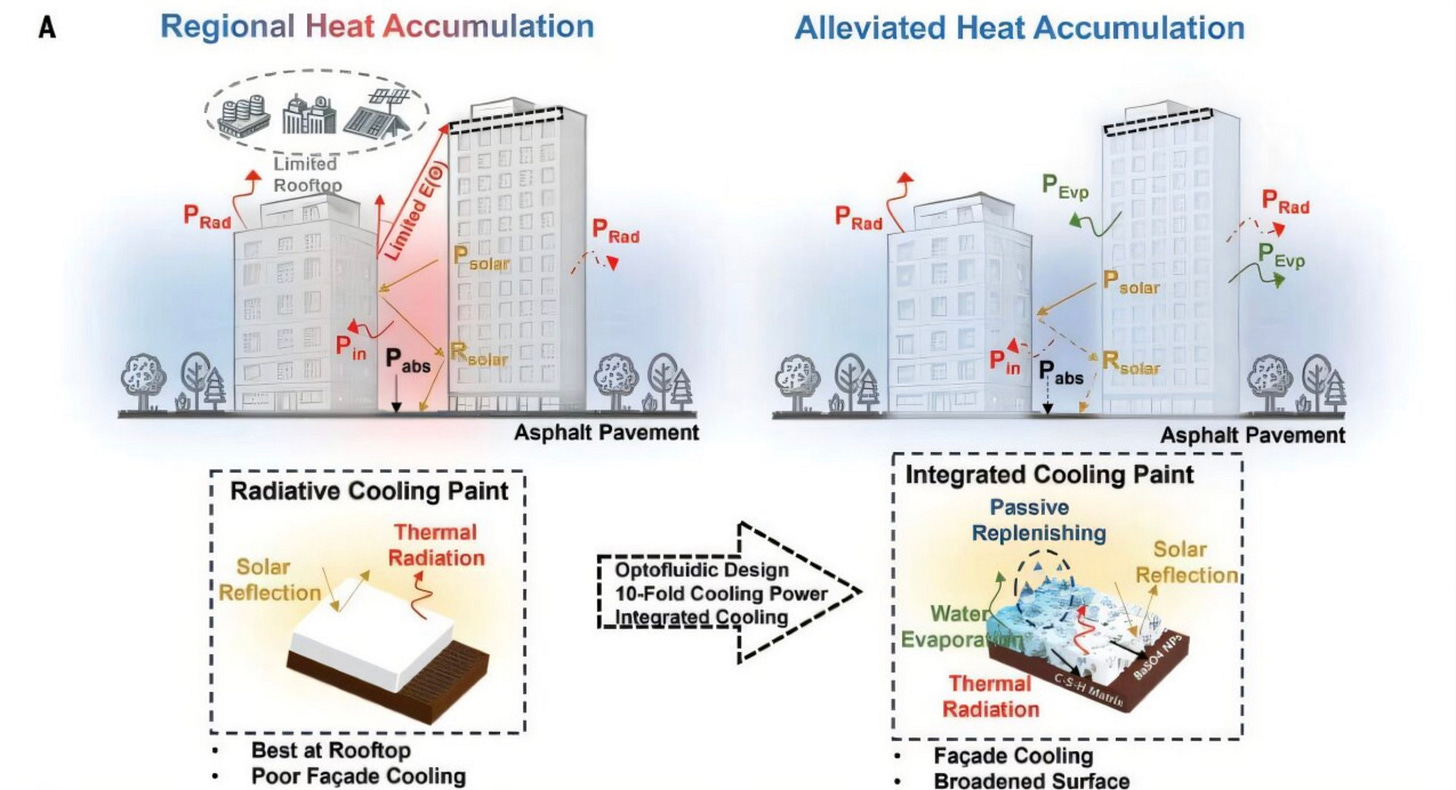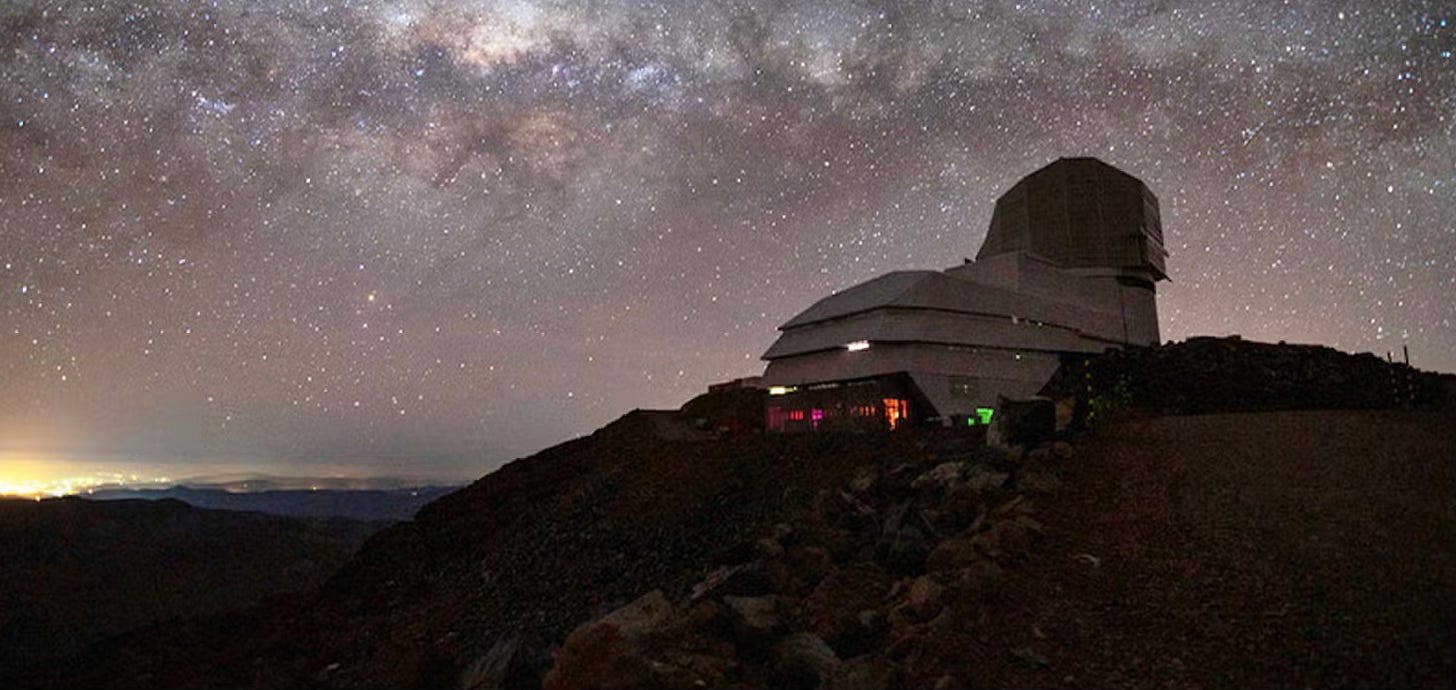This week we investigate a new method of detecting cancer in the blood up to 3 years prior to symptoms appearing or other traditional methods of diagnosis. We examine a new concrete based cooling paint that can dramatically reduce the cost of cooling in tropical regions. We ask the question, “Have we found Planet 9”? We have been following the search for Planet 9. A team has come up with a new method of finding the mysterious planet and it may already have paid dividends. Finally we visit the Vera Rubin Observatory which opened in Chile this week. This new facility will allow us to take a survey of the southern sky every few nights.
Detecting Cancer in the Blood
Researchers at Johns Hopkins University have developed a method to detect cancers in the blood stream up to 3 years prior to current methods of diagnosis. The genetic material shed by tumors was able to be detected prior to clinical signs or symptoms.
The team was able to use blood samples collected for the Atherosclerosis Risk in Communities study. This was a large study funded by the National Institutes of Health which was investigating risk factors for heart attacks, stroke, heart failure and other cardiovascular diseases.
Blood sequencing techniques were used to analyze blood samples from 26 participants in that study who had been diagnosed with cancer within six months of sample collection. Another 26 participants who were not diagnosed with cancer were used as a control.
At the time of the blood sample collection 8 of the 52 scored positively on a multi cancer early detection (MECD) lab test. The test looks for signs of cancer such as pieces of DNA, RNA or proteins from abnormal cells. For 6 of those 8, additional blood samples collected 3 to 3.5 years earlier were also assessed. In 4 of the 6, tumor derived mutations could also be identified in the samples.
The study shows the promise of MECD testing and allowed the team to set benchmarks for the sensitivity of testing required for successful identification of cancers. MEDC testing is not yet FDA approved however it is available in the US for use under certain conditions.
The next step is to determine appropriate clinical follow ups for such early detection. Knowing there is an early stage cancer in the body is one step, you also have to identity where this likely very small cancer, is located.
Passive Cooling Paint
A diverse team from Singapore, China and Saudi Arabia have developed a new cement based paint that can cool down a building by causing it to sweat off the heat. The cooling paint can provide 10 times the cooling power of commercial cooling plants in tropical climates.
The paint features a nanoparticle modified porous structure composed of a calcium silicate hydrate gel network. This design combines radiative, evaporative and reflective cooling mechanisms. The paint causes 88 to 92% of sunlight to be reflected and 95% of heat to be emitted as infrared radiation. The paint holds about 30% of its weight as water which induces evaporative cooling. The paint keeps buildings cool throughout the day and across seasons.
Space cooling systems take up about 20% of the total electricity usage in buildings globally. The paint should also play an important role in the reduction of the creation of heat islands in our cities. Heat islands form in densely built up areas and have much higher air temperatures than surrounding suburbs.
Current cooling paints rely on radiative cooling. This process is most suited to drier climates. These paints are less effective in humid conditions and in areas with high levels of cloud cover. This is where evaporative cooling steps in to assist. The water held within the paint can absorb and evaporate thermal energy. This mechanism is non directional. It does not rely on surface orientation. The water can be absorbed from rain.
In field tests in Singapore, pilot buildings showed 30 to 40% electricity savings.
Have we found Planet 9?
It was only 3 weeks ago that we discussed Planet 9. The speculated planet that is so far away from the sun that it is almost impossible for us to see any reflection of light from the planet. Astronomers have spent a few decades looking for this light signature to confirm the existence of the mystery planet.
A team from National Tsing Hua University in Taiwan have taken a different approach and it may already have yielded dividends. If Planet 9 exists it would be 5 to 10 times the mass of the Earth and orbit some 400 to 800 times further away from the sun than Earth. The light reflection from Planet 9 is much lower due to the fact that when you double the distance from the sun, reflected light becomes 16 times fainter. At such a distance the reflected light would be tiny.
The team decided that the heat signature from Planet 9 would be easier to find than any reflected light. Thermal radiation, that heats all celestial objects only becomes four times fainter when you double the distance. The team used the data from a Japanese space telescope named AKARI. It conducts sky surveys in far infrared light which is the perfect wavelength to detect the heat signature of a cold distant planet such as Planet 9.
Planet 9 should appear stationary during a single day however it will show as moving over several months. The team compared AKARI observations taken at different times to identify objects with this kind of motion. It also allowed them to filter out cosmic rays, background galaxies and cosmic debris.
The team identified two potential locations for Planet 9. Both were in the region that the theories predict and emit the expected amount of infrared light. Follow up observations will now be conducted with more powerful telescopes to see if the mysterious Planet 9 has been discovered. Stay tuned.
A New View of the Cosmos
This week the Vera Rubin Observatory was opened at the summit of Cerro Pachon, a mountain in central Chile. The location provides dark skies and dry air which make the ideal conditions for observing the universe. The Observatory was US funded and named after pioneering American Astronomer Vera Rubin whose research provided the first conclusive evidence of dark matter.
The Observatory has an 8.4 meter telescope and the largest digital camera ever built. The camera is the size of a car and weighs 2.8 tons. Images of 3,200 megapixels can be captured. This is three times larger than the next most powerful instrument.
During 10 hours of observation the Rubin Observatory discovered 2,104 asteroids in our solar system. These include 7 near Earth objects (which pose no threat). In comparison, all of our current ground and space based observatories combined only discover about 20,000 new asteroids per year.
The main goal of the Observatory is to observe the Milky Way over the next 10 years. The observatory will scan the entire visible sky every few nights. These snapshots will be used to track supernova, asteroids, black holes and galaxies as they evolve in real time.
The observatory will also try and help us develop an understanding of dark matter and dark energy, it will create an inventory of the solar system and explore objects throughout the universe that change position or brightness over time.
Paying it Forward
If you have a start-up or know of a start-up that has a product ready for market please let me know. I would be happy to have a look and feature the startup in this newsletter. Also if any startups need introductions please get in touch and I will help where I can.
If you have any questions or comments please comment below.
I would also appreciate it if you could forward this newsletter to anyone that you think might be interested or provide a recommendation on Substack.






